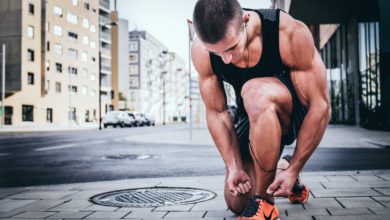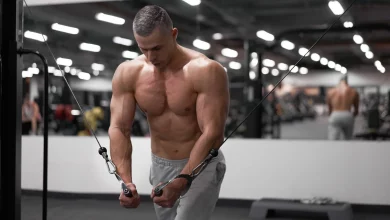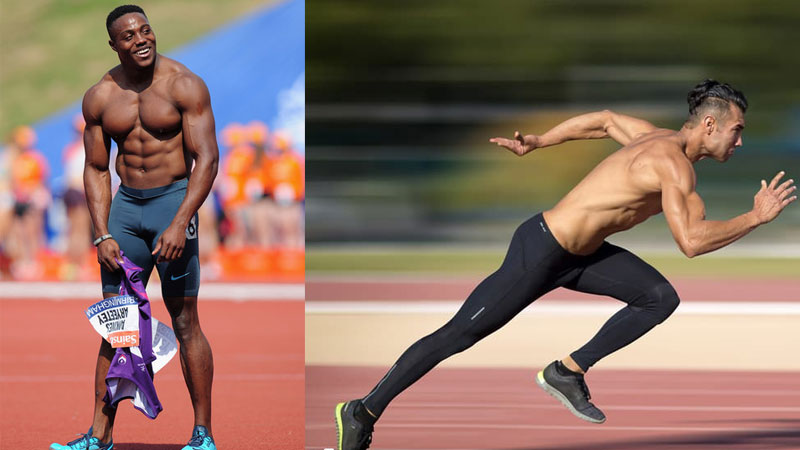
Sprinting speed is important in practically all sports. And to be the best of the best you need to be strong, powerful and explosive.
If you want to be top of your game on the sports field, you’ve got to spend time in the trenches, getting that sprinting speed as fast as possible.
You can’t expect to get quicker if you don’t train the right way.
Right now, you’ve already spent time on the track, clocked up some miles, but don’t seem to be getting anywhere.
Well here is the cure.
Not everyone wants to run.
To be honest, even if we got an invite from Paige Hathaway telling us she was laid waiting with her hot, naked ass in the air ready for a sweaty, wet f*ckathon, it’s doubtful that we’d be running there.
We’ll take out chances and walk there, thank you very much. It’d be a quick walk for sure… but no sprinting. No thanks bro.
Anyway, we digress.
You obviously want to boost your sprinting speed. And we applaud you for it.
Here’s how…
All athletes should be able to sprint fast
If you take a look at the NFL combine scores for the 40 yard dash for example, you’ll consistently see times below 5 seconds.
That’s fast. Like, real fast.
Being able to lug your frame around at top speed isn’t isolated to football either. Because practically all sports require sprinting ability. It’s one of the major components of success.
Faster sprinting times means that:
- You’re able to make more tackles
- You’ve got more time to make important decisions
- Less energy used at sub-max intensities
- Every time you’ll be first to the ball, puck or finishing line
- There’s more lower body power for kicking, punching and throwing
And if you really want to get more explosive, here’s how…
#1. Develop Your Glutes
Did you know that women are hard wired to get wet at the sight of a guy with huge, muscular glutes.
A thick a$$ and strong lower body will get them foaming at the (pussy) lips for sure.
Simply because it triggers the part in their brain that tells them you’re more likely to be able to have the strength and stamina to give them what they want in the bedroom.
Strengthening your glutes through hip thrusts, Romanian deadlifts and squats will soon get you shaving seconds off that sprinting speed.
Because the glutes are an important muscle for linear propulsion.
A 5 x 5 approach will work well here and really get those muscles firing.
#2. Get Leaner
If you’re carrying that little bit more fat than you really should be, you need to get leaner.
That way you’ll be lighter and take less energy to shift your mass.
You just can’t move as fast if you’re carrying dead weight. That’s just simple physics. So drop your calories, put the burger and fires down and back away from the peanut butter frozen yogurt and do what you need to in order to get lighter.
According to stats from the NFL, it’s running backs and wide receivers that tend to be the fastest on the field… and it’s no coincidence that they’re also the lightest too.
#3. Heavy Sled Drags for The Win
Sled drags.
They’re horrible.
Unless you think that skin-melting, muscle burning lactate in your quads is cool. As an exercise it’ll have you gasping for breath with more ferocity than a BBW face-sitting session would.
We know… we tested it.
How heavy should you go (with a sled drag that is)?
As near to your max squat as you can tolerate. And then enjoy some low volume 3-5 sets of 20 yard acceleration training.
*prepares sick bucket.
Here’s the kicker… try and use the same mechanics as you would when sprinting. A high hip drive, stiff ankles, forward lean from your trunk and explosive steps are all going to transfer to sprinting performance.
#4. Run More Frequently
It’s okay saying that you’re not getting any faster. But exactly how often do you hit the track?
If you’re not practicing sprinting at least 3 times per week, chances are you’re not optimizing progress.
So lace up your spikes, get on that field and build your weekly sprint volume.
Vary your distance, and even your speed from 80-100% of your max. Just get good at the movement, the mechanics and the feel of it.
Note: working in a 2-3 week block of high-volume, with a week of deload works well and limits injuries to calves and hamstrings.
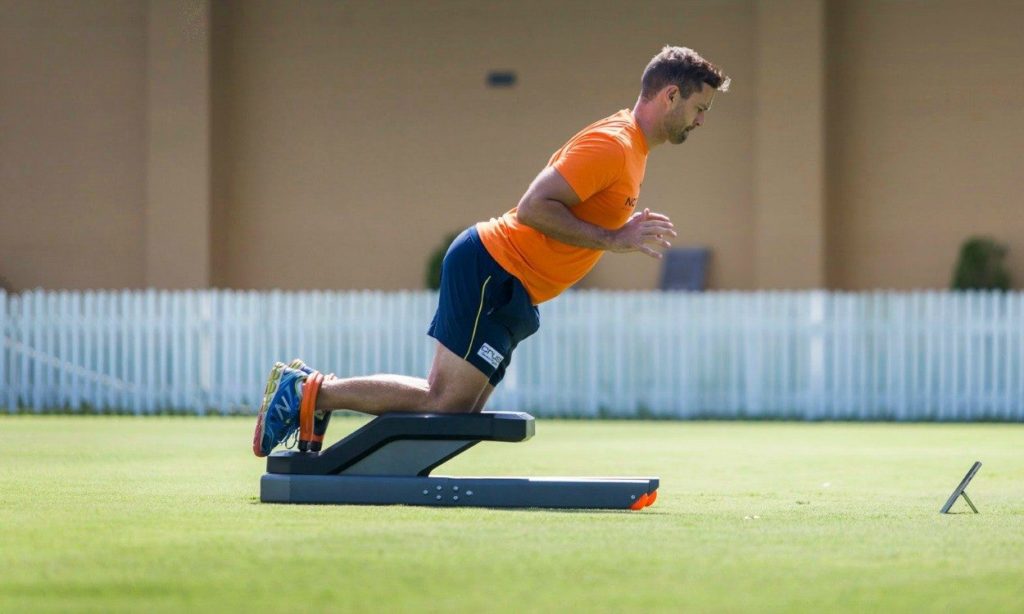
#5. Strengthen your hip flexors
You need explosive hip flexor power to drive your leg through during the swing phase of sprinting (when your leg goes in front of you in anticipation of landing).
If your drive is slow you’ll end up reducing stride frequency, and the result will be a sprint time that even our dear Granny could beat… and she’s been dead for 3 years bro.
Most athletics coaches spend time with their athletes making the hip flexors muscles as strong as possible.
And the fastest sprinters tend to have pretty jacked muscle mass in their hips (Asafa Powell is a great example).
Here’s how you can mass up those hips and get faster on the track:
- Loaded/resisted knee drives
- Wall drills
- Single leg lifts with band
- Resisted sprints
#6. Develop bullet-strong hamstrings
Your hamstrings are key to good running economy, efficiency and sprinting speed.
During push-off (when you drive through the ball of your foot to create forward propulsion), it’s your hamstrings that push your hip into extension.
Your hamstrings also keep your knee in a bent position when you swing your front leg in front of your body, ready for contact.
Most sprint coaches suggest that hamstring training should be done in both an isometric (where you contract the muscle without moving the knee or hip joint) as well as eccentrically (lengthening the muscle under tension).
This is because the hamstrings lengthen when you push off, and maintain knee stability during the swing phase. So it’s more ‘functional’ to train them like that.
Good hamstring exercises for sprinting speed include:
- Isometric leg curls on a ball
- Nordic ham curls
- 2:1 eccentrics on lying leg curls
- Accentuated glute-ham raise
#7. Reduce Stride Length
Any sprint coach worth his paycheck will tell you that shorter, faster stridesare the key to a quicker sprint.
Long strides will slow you down.
The longer your foot is in contact with the ground, the lower your reaction force will be. You basically lose elastic potential from the Achilles as heat.
And that’s what happens with lengthened strides.
To get faster, you need to hit short, quick strides that take advantage of your body’s natural elastic strength.
Long strides add ‘braking’ as you’ll land with a stiff front leg. Combine that with less elastic force and your speed will disappear faster than a tub of creatine in the SpotMeBro office.
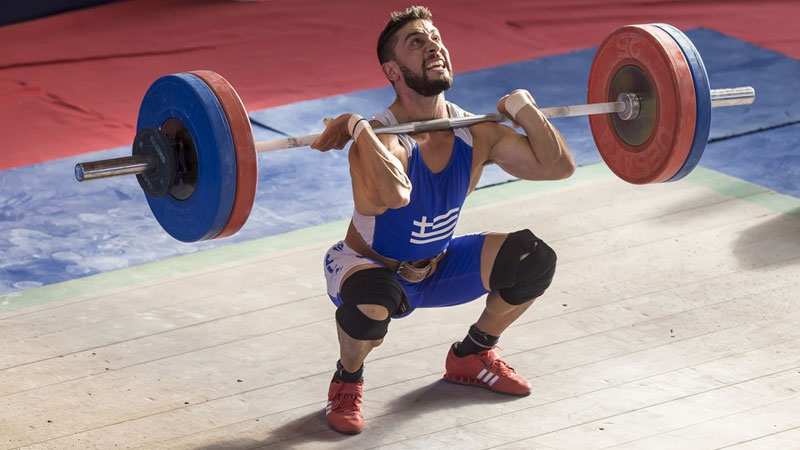
#8. Just Get Strong as F*CK
This is a short one.
But important.
You don’t need to get bodybuilder jacked. But getting stronger is never a bad thing when it comes to sprinting speed (we don’t mean more muscular, we mean more powerful).
A stronger athlete is much more explosive. Force and speed are closely related to strength, so programming heavy lifting in general will help with sprinting ability.
Deadlifts, squats, overhead presses and rows are all staple sprinter exercises.
#9. Use Good Arm Swing Mechanics
Your body works in a sling system where muscles and fascia connect. When you drive your leg forward during the swing phase, your center of gravity shifts.
If you don’t swing the opposite arm through powerfully enough, your torso will begin to rotate and you’ll lose kinetic energy.
Your left glutes slings with your right lat dorsi muscle in your back. And the same on the other side.
Basically you’ll swing your hips like an overly-keen runway model at high speed if you don’t move the two areas in synergy.
And that’s not cool.
Keep your elbows close to your body to reduce wind drag and keep your arms bent at 90 degrees when you pump them back and forwards.
You’re aiming to bring your hands (which should be relaxed, with fingers pointed) in line with your shoulders or eyes, but no higher.
Make the arm drive behind your body as aggressive and as fast as possible.
As the old saying goes; fast arms means fast legs.
#10. Use Plyometric Drills In Your Training
We’re not talking about those sh*tty jumping exercises you see the celebrity trainers playing around with.
We’re talking about full on elastic potential drills that use:
- A rapid eccentric phase
- This is then followed by absolute minimal ground contact
- Then finally a forceful concentric action
In other words, real plyometric training uses drills that optimize how you use the stored elastic response in your tendons.
If you spend any longer than around 0.3 seconds on the ground during each plyometric rep you aren’t doing plyos… you’re just jumping around like an ass.
Here are some great plyometric drills to get you moving faster on the field:
- One-legged hurdle jumps
- Broad jumps
- Triple jump drills



